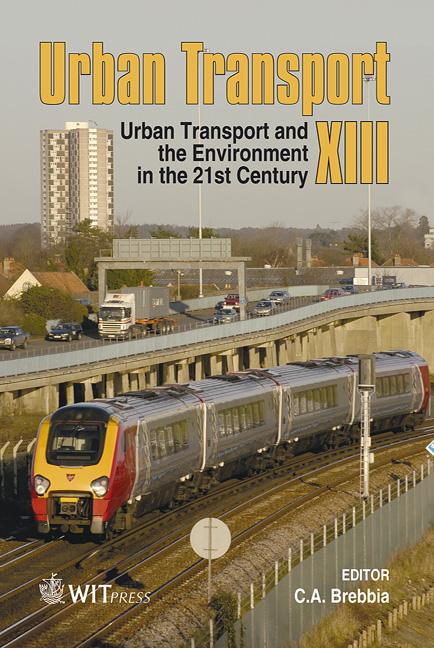Regional Road Traffic Management In The Netherlands
Price
Free (open access)
Transaction
Volume
96
Pages
8
Published
2007
Size
720 kb
Paper DOI
10.2495/UT070261
Copyright
WIT Press
Author(s)
J. Vrancken, F. Ottenhof & M. Soares
Abstract
This paper describes an approach to road traffic management (TM) at the network level. The paper is based on the experiences with the HARS system in and around Alkmaar, The Netherlands. This system is meant to integrate the traffic management on the urban, provincial and motorway networks near Alkmaar. The approach consists of a combination of top-down, scenario-based TM and bottom-up TM, based on communicating network elements (road segments and junctions). The paper argues that both ways have capabilities and limitations and that the best results can be achieved in combining the two and in achieving synergy between them. Keywords: road traffic management, network management, regional traffic management, multi-agent control. 1 Introduction Traffic management (TM) is applied in congested areas worldwide. Its goals are improving network performance, safety, travel time reliability and drivers' comfort, while reducing congestion and air pollution by road traffic. The oldest and best known TM-measure is the traffic signal, managing traffic at a crossing of roads. Currently, many more measures exist, but virtually all of these are local measures, with a scope in the order of a few hundred meters. There are a number of reasons that make it desirable to take larger parts of a network into account when doing TM. First of all, it is often observed that a congestion problem dealt with using local measures without taking the network context into account, is only shifted to some other place. Secondly, a number of the criteria that express network performance, are criteria at the network level,
Keywords
road traffic management, network management, regional traffic management, multi-agent control.





